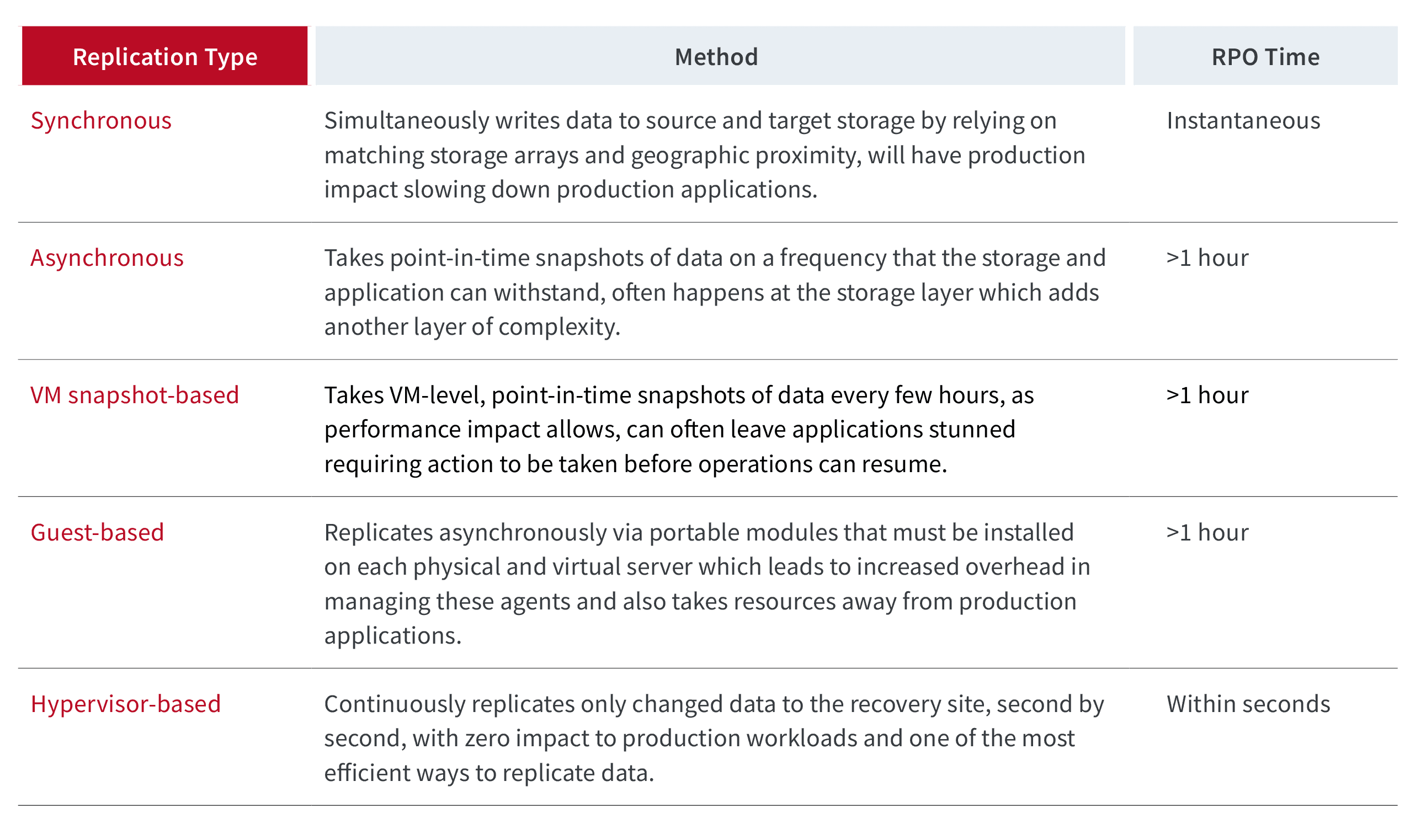
How to Choose the Right DRaaS Provider: Key Considerations
Disaster Recovery as a Service (DRaaS) has become a vital component of modern business continuity planning. Choosing the right DRaaS provider is crucial for ensuring the resilience and availability of your critical systems and data. In this blog post, we’ll explore key considerations to help you make an informed decision when selecting a DRaaS provider.
Key Considerations When Choosing a DRaaS Provider
Assess and Define Your Disaster Recovery Needs
Before you start evaluating DRaaS providers, assess your organization’s specific requirements. Consider factors such as the types of applications and data you need to protect, your recovery time objectives (RTOs) and recovery point objectives (RPOs), compliance requirements, and budget or resources constraints. The resources aspect is most likely to have an influence on the DRaaS model your choose (self-service, partially managed, fully managed).
Understanding your needs will help you narrow down your options and find a provider that aligns with your priorities.
Evaluate the Reliability and Availability of the DR Service
The primary goal of DRaaS is to ensure uninterrupted access to critical systems and data in the event of a disaster. Therefore, reliability and availability should be top priorities when evaluating providers. Look for providers with a proven track record of uptime and reliability, backed by robust service level agreements (SLAs) that guarantee performance levels and response times.
Assess the Data Protection Capabilities of the DRaaS Vendor
Data protection lies at the core of DRaaS. Evaluate the provider’s data replication, backup, and recovery capabilities to ensure they meet your requirements. Consider factors such as the frequency of data replication, storage efficiency, support for different types of data (e.g., virtual machines, databases, files), and the ability to customize backup and recovery policies to align with your business needs.
When selecting a DRaaS provider, it’s important to understand their approach to disaster recovery and how it fits with your organization’s needs. A DR solution may use one of several kinds of replication, each one providing a different functionality and RPO, as shown in the table below.
Replication occurs on a schedule. Whether it’s seconds or hours, the recovery times a DR solution provides depend on what kind of replication is being used.
Snapshot based recovery has wide windows of potential data loss because snapshots are taken hours apart.
On the other hand, hypervisor-based replication constantly replicates data as it’s in memory in the hypervisor and uses journal-based technology to provide industry-low RPOs and RTOs. Because it replicates only the changed information (rather than the entire application), hypervisor-based replication doesn’t impact VM performance. This is true continuous data protection.
Check the Scalability and Flexibility of the DRaaS Solution
Your organization’s IT environment is likely to evolve over time, so it’s essential to choose a DRaaS provider that can scale with your business. Look for providers that offer flexible deployment options (e.g., public cloud, private cloud, hybrid cloud) and can accommodate changes in workload and data volume without disrupting operations. Scalability ensures that your DRaaS solution can grow alongside your business and adapt to changing needs.
Confirm the Security and Compliance of the DR Service
Protecting sensitive data is paramount, especially in the context of disaster recovery. Evaluate the provider’s security measures, including data encryption, access controls, network security, and compliance certifications (e.g., SOC 2, HIPAA, GDPR). Ensure that the provider adheres to industry best practices for data protection and has robust security measures in place to mitigate the risk of data breaches or unauthorized access.
Review DRaaS Provider’s Level of Support and Customer Service
Finally, consider the level of support and customer service offered by the DRaaS provider. Choose a provider that provides proactive monitoring, timely support assistance, and ongoing guidance to help you optimize your disaster recovery strategy. Evaluate the provider’s reputation for customer satisfaction and responsiveness, as reliable support can make a significant difference during a crisis.
By considering these key factors, you can choose a DRaaS provider that meets your organization’s needs and provides the peace of mind that comes with robust disaster recovery capabilities. With the right DRaaS solution in place, you can ensure business continuity and resilience in the face of any disaster.
Disaster Recovery as a Service Powered by Zerto
Zerto, a Hewlett Packard Enterprise company, makes it easy to weigh your options. Zerto provides continuous data protection (CDP) with near-synchronous replication and unique journal-based technology. This delivers industry-leading RPOs, which is the time elapsed since the last good data copy (i.e., data loss), and RTOs, which is time needed to access the last good data copy (i.e., downtime).
Zerto provides this all-in-one functionality in a single flexible solution and is the underpinning of over 350 Managed Service Provider’s (MSP) DRaaS solutions. In addition to best-in-class SLAs, lightweight software, and comprehensive DR through continuous data protection, a Zerto partner provides:
- True disaster recovery. Unlike solutions whose core systems still rely on backup, Zerto provides comprehensive DR with continuous data protection and industry leading RPOs and RTOs.
- From DR to migration. Zerto can be used as a DR or migration tool to move to, from, or between multiple clouds. Helping you avoid vendor lock-in, Zerto provides true protection and mobility across public and private clouds and any hybrid and multi-cloud deployment.
- Ransomware resilience and recovery. Built-in anomalous encryption detection to alert you of a cyberthreat now of impact coupled with journal checkpoints and fully automated failover and failback to recover encrypted files and data within minutes of when an infection occurred.
- Non-disruptive testing. Zerto runs failover, dev, and other QA tests at any time without production impact, ensuring aggressive SLAs are met.
To learn more, read our DRaaS 101 eBook or visit our DRaaS solution page.
Want to get some information about Zerto DRaaS providers? Explore our Partner Finder and get started today!

 Michael Nassis
Michael Nassis 

